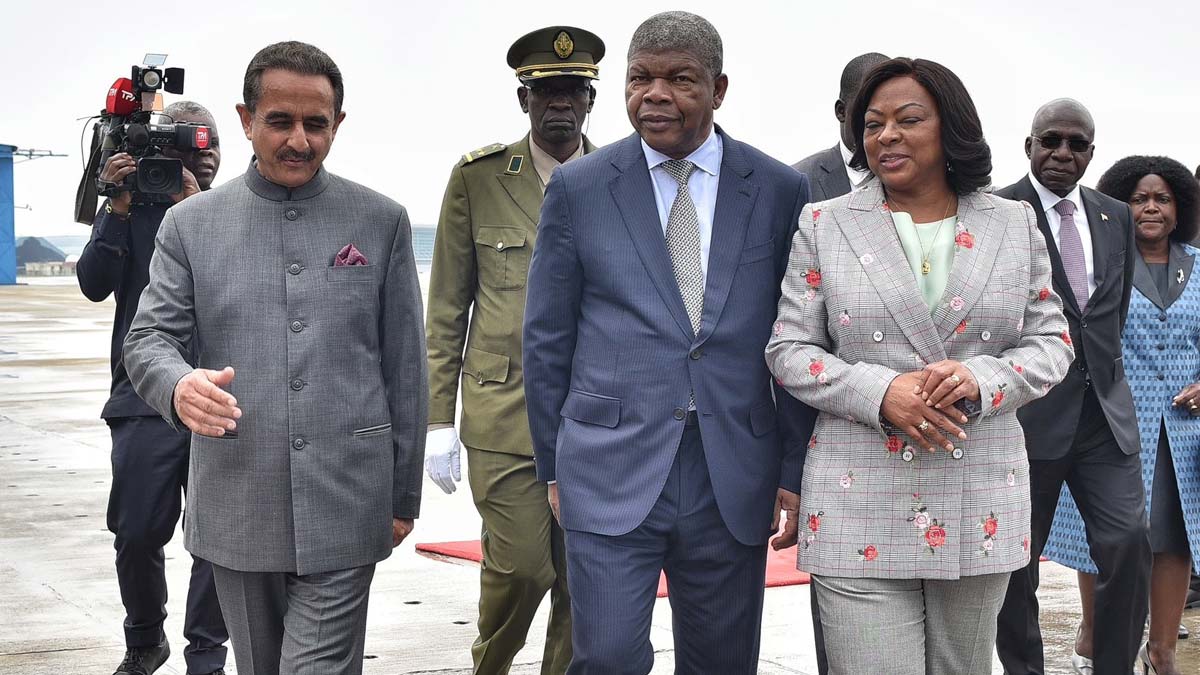India’s oil equation: How Angola is becoming India's indispensable ally

Power may once have been spilled from the barrel of a gun, but Angola is showing the energy-starved world that today, it flows from the barrel of crude oil. As Angolan President João Lourenço arrived in India on his maiden visit to India earlier this month (May 2-4), two nations from opposite ends of the world found themselves co-architects of a new multipolar order.
President Lourenço—a former freedom fighter who took up arms to liberate the motherland from Portuguese colonial rule—arrived in New Delhi at a time when both countries are pushing to reform global institutions and rebalance power dynamics. His visit is more than ceremonial; it signalled the elevation of India-Angola ties into a deep partnership grounded in energy, defence, technology, and developmental aspirations.
India is already one of Angola’s largest buyers of oil and gas. Now, the relationship is expanding far beyond hydrocarbons. Following bilateral talks, both countries committed to deep cooperation in digital public infrastructure, space technology, defence, diamond processing, healthcare, and critical minerals. India has offered a $200 million defence credit line to modernise Angola’s armed forces and will help train its military personnel.
Sitting on the southwestern coast of Africa, Angola is working to reduce its economic dependence on oil by attracting investments from China, the UAE, and Portugal, particularly in infrastructure, ports, railways, and energy. India, too, sees an opportunity: the potential introduction of Indian diesel locomotives and the expansion of Angola’s railways—especially into mineral-rich regions—could be transformative. As India’s Economic Envoy Dammu Ravi noted, “There is a possibility to introduce Indian diesel locomotives and also expand the railway network interior, north-south and east-west and leading into the areas of their minerals, which are very important for them in terms of logistics.”
Despite $4.2 billion in bilateral trade, Angola enjoys a major surplus. India imports around $3.5 billion—mostly oil—while exporting less than $700 million in goods such as medicines, meat, textiles, cotton, chemicals, leather items, tractors, and vehicles. Angola sends iron, copper, aluminium, and other minerals in return, apart from energy. Reducing this imbalance will require India to push for better market access and explore investment-led growth in Angola.
Angola is habitat to around 8,000 people of Indian origin and has recently implemented visa-free entry for Indian citizens to promote tourism and business. The historical links are not just symbolic. Goa and Angola, once colonies under Portuguese rule, share cultural resonances. Pandurang Shirodkar, the first speaker of the Goa legislative assembly and an early supporter of Angola’s independence, was imprisoned and deported to Angola by the colonial regime—an overlooked but powerful connection.
India inspired and supported Angola’s liberation movement, and post-independence, India backed the Popular Movement for the Liberation of Angola (MPLA). The two are vocal at the forums like Non-Alignment Movement.
Unlike India, Angola’s real soft power doesn’t lie in cultural exports like Bollywood or the Taj Mahal. Instead, it lies in Sonangol, its oil giant. Formed in 1976, the state-owned Sonangol is now Africa’s second-largest oil producer and one of its most diversified corporations, with stakes in telecoms, shipping, engineering, and even shipbuilding. The company’s PAENAL shipyard hosts Africa’s largest heavy-lifting crane—a symbol of Angola’s industrial ambition. India is already partnering on key infrastructure projects such as the Moçâmedes Railway and sees potential for deeper collaboration in satellite technology, where ISRO could play a future role. Angola currently works with Russia and France on space applications, but India’s affordable space programme offers an attractive alternative.
Angola also holds growing geopolitical relevance. As chair of the African Union—whose entry into the G20 was strongly backed by India—Luanda is poised to shape continental strategies. Its ties within the Community of Portuguese Language Countries (CPLP) also give it leverage in Latin America, especially Brazil. The cultural and strategic alignment with lusophone nations puts Angola at the crossroads of continents and makes a link between Latin America and Africa.
Moreover, Angola’s recent role as a mediator in the Rwanda- DR Congo peace talks and President Lourenço's strong condemnation of the Pahalgam terror attack highlight its emergence as a responsible global actor. As Angola discovers new oil fields, India’s expertise in refining, transport, and energy infrastructure could play a vital role in translating resources into growth.
Angola’s participation in the India-led Coalition for Disaster Resilient Infrastructure, Big Cat Alliance and Global Biofuels Alliance would be a transformative episode. Yet the challenge remains: to ensure this relationship doesn't plateau at trade. Without active investment, deeper cultural exchange, and expanded cooperation, passive trade imbalances could undercut long-term goodwill. This is the moment to build a robust, reciprocal trade partnership—one that connects Luanda and New Delhi, Mumbai, Bengaluru, Mysore, Calcutta and Goa not just through products, but through values, and opportunity. Angola's position within BRICS—attending summits and maintaining separate ties with each of the BRICS nations—further cements its strategic weight. If BRICS expands further in Africa, Angola could become a cornerstone in fulfilling the energy and development needs of the Global South. Private companies from Russia and India should exercise a greater role to make the nation glitter, by penetrating into areas like agri-tech.
However, to address the persistent trade imbalance, India must seek greater market access in Angola and across the region. A passive trade dynamic risks undermining the healthy and warm relationships between the two aspiring global south powers.
Ayanangsha Maitra, PhD is a New Delhi based journalist and fellow with Center of Geoeconomics for the Global South, UAE. His X handle is @Ayanangsha.
The opinions expressed in this article are those of the author and do not purport to reflect the opinions or views of THE WEEK.
World